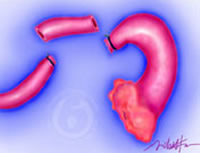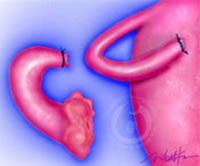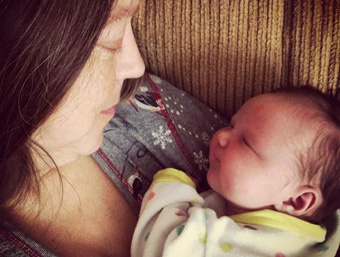Tubal Ligation by Parkland and Irving Methods
Parkland tubal ligation

Parkland Tubal Ligation
The Parkland tubal ligation technique falls into the category of tubal ligation and resection. The Parkland procedure involves tying two non-absorbable ligatures around the fallopian tube in its proximal to middle segment and then cutting out the tubal segment between the ligatures.
The end result is similar to the Pomeroy method of tubal ligation. Two healthy tubal segments remain that can be rejoined by tubal reversal microsurgery.
Two-thirds of women with a Parkland tubal ligation become pregnant following tubal reversal surgery.
Irving tubal ligation

Irving Tubal Ligation
Tubal ligation by the Irving method starts by placing two ligatures around the fallopian tube in its proximal to mid-segment and removing the tubal segment between the two ligatures. Then, the tied end of the segment of fallopian tube attached to the uterus is sutured into the back side of the uterus, and the other tied end is buried in the connective tissue underlying the fallopian tube.
As with other ligation/resection methods, the Irving technique leaves behind two healthy tubal segments that can be put back together with tubal reversal microsurgery.
The pregnancy rate after reversal of an Irving tubal ligation is 60-70%.
Tubal ligation procedures
Normal fallopian tube anatomy and other tubal ligation procedures described in the following pages are:








